For a few years now, we here at the James Martin Center for Nonproliferation Studies and our benevolent overlords at the Nuclear Threat Initiative have been using 3D modeling as a way to create flashy visuals to engage the public. We do so to remind them that nuclear missiles are (a) horrifically dangerous instruments of mass death that continue to exist and (b) pretty cool. These goals are important in and of themselves; while arms control affects everybody who would rather not get incinerated, the subject matter is dense and arcane and needs something visual to make it sexy for the non-wonk.
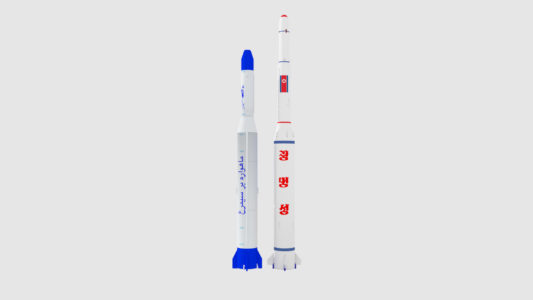
Pictured: Sexy
BUT the act of 3D modeling a missile can serve a purpose beyond giving it a virtual pat, namely, it can be an extremely useful analytic exercise. The process of 3D modeling a missile from photographs forces one to think about it as an object that exists in space as opposed to a list of characteristics in a spreadsheet. 3D modeling allows you to “physically” manipulate different components in 3D space to get an idea of how they all fit together. It is important to note that this works if and only if you make sure that your 3D objects’ sizes are basically correct relative to one another. If they aren’t, or you’re just resizing and reshaping things arbitrarily to make them fit, you aren’t really learning anything.
A good example came about comparing the engine cluster configurations of North Korea’s Unha SLV and Iran’s Simorgh SLV while creating the model for this piece for NTI. Both use a cluster of 4 scud-based engines for their first stages, however the turbopump exhausts are in different positions, the Unha’s are packed tightly while the Simorgh’s radiate outwards.
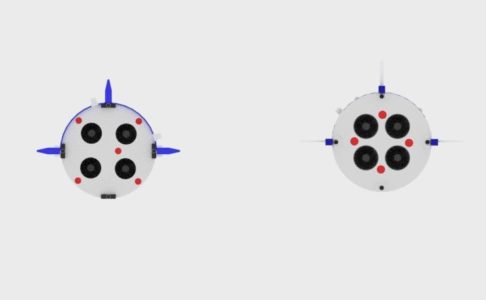
I am not spatially gifted, I cannot rotate and manipulate objects in my mind without a visual frame of reference. Luckily I DID have a visual frame of reference, my engine cluster model. A problem that, for me, would have taken at least fifteen minutes worth of doodling and head scratching took about thirty seconds to solve by simply screwing around with how the engines were rotated.
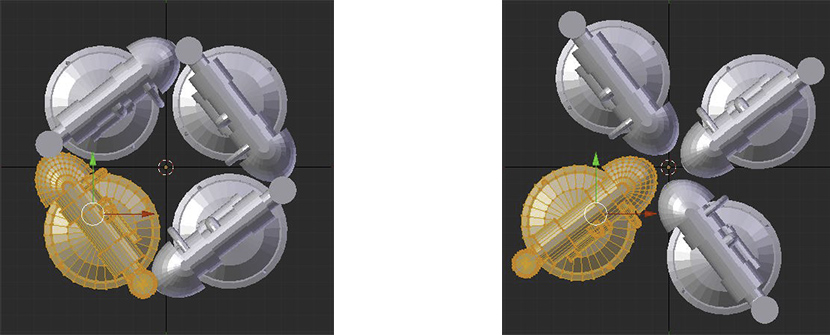
My most recent task as a lacky Graduate Research Assistant here at CNS was to create a new model of North Korea’s 3500 km range flying baby-bottle the Hwasong-10, better known to you imperialists as the Musudan, which saw its first clearly successful test flight last June 21. I created the model using Blender, a free and open source 3D modeling platform.
Because 3D modeling forces a certain type of attention to detail and physical configuration, I learned (and more importantly, easily remembered) more about the Musudan than I otherwise would have. For example, I wanted to understand the Musudan’s internal configuration to the extent possible. At first all I had to go off of was Musudan’s inspiration, the old Soviet R-27 “Zyb” SLBM, for which we have access to fairly detailed diagrams and specifications.
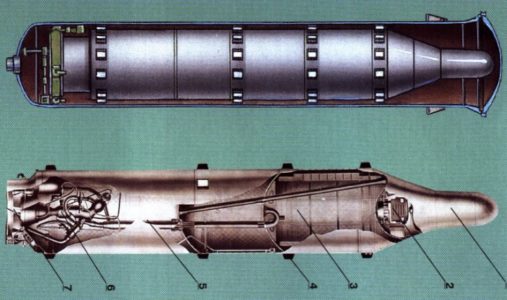
As you can see the fuel and oxidizer tanks in the Zyb sit flush against one another so I assumed that this was true for the Musudan as well, and this is reflected in my first drafts of the model. However, close examination of the Musudan’s external characteristics suggest that its tanks are configured more like those of the Unha, where they are separated by an intertank section that needs extra reinforcement to help hold the shape of the airframe.
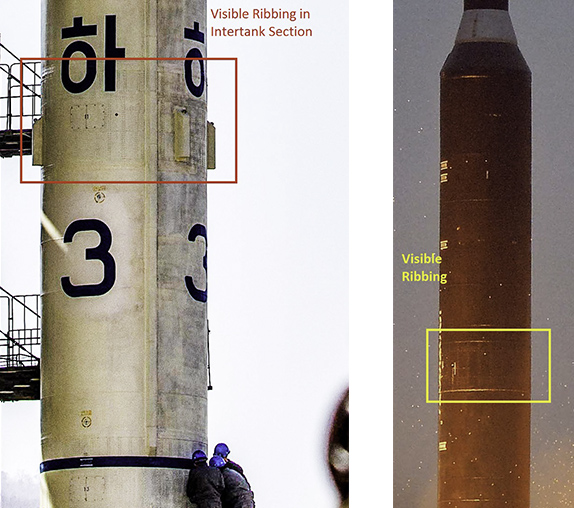
While I had noticed the visible ribbing on my first analysis of the Musudan launch photographs, I decided that it made more sense to go with the “known quantity” of the R-27’s internal configuration. However @stoa1984 pointed that this didn’t make sense, and after reflecting on the vagaries of OSINT analysis as well as my pride I decided that @stoa1984 was probably correct and changed the model. Had I not been trying to build a model (and had Jeffrey Lewis not put it up on Twitter where people like @stoa1984 could comment on it), my analysis would probably have just ended at that first step.
I was also able to estimate the size of the warhead compartment. I am (reasonably) sure that my model is sized and proportioned correctly because I essentially “traced” it from a nice orthogonal photograph with minimal wide-angle distortion.
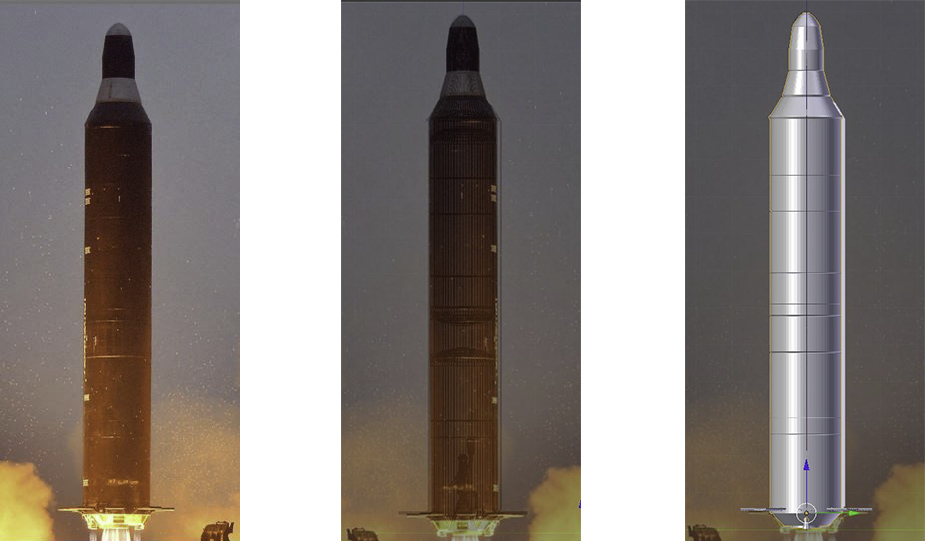
Armed with these correct proportions along with our estimated height and width of 11.5 meters by 1.5 meters (which I derived from the known height of the Musudan’s MAZ-547B TEL), I was able to do a measurement of the warhead compartment of the Musudan’s reentry vehicle, and I determined that the warhead compartment is around 850 mm in diameter, enough room for the give or take 600 mm spherical warhead that the also spherical Kim Jong Un likes to pose with.
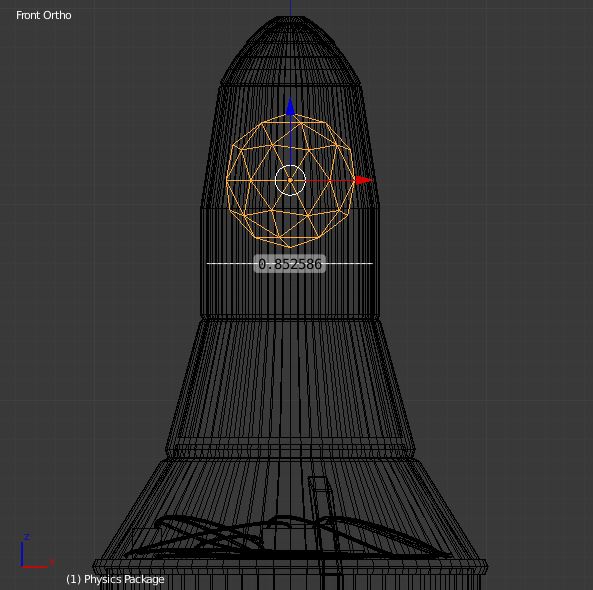
I don’t want to overstate what 3D modeling can do. Like all other techniques of OSINT analysis, and perhaps more so, it is subject to the danger of pushing you to create your own reality by fudging around with the details until you get the picture that you want. However, we are finding it to be a genuinely useful tool for both analyzing specific aspects of our objects of interest as well as pushing us to think extremely carefully about the conclusions that we are drawing. There are other potential areas we haven’t touched on yet, such as the ability to very quickly and easily estimate fuel/oxidizer tank volumes, or being able to assign mass to parts of the model to estimate the overall weight of the airframe. But these are all topics for a future post, in the meantime, enjoy the pretty pictures of these horrible things.

“I was able to do a measurement of the warhead compartment of the Musudan’s reentry vehicle, and I determined that the warhead compartment is around 850 mm in diameter, enough room for the give or take 600 mm spherical warhead that the also spherical Kim Jong Un likes to pose with.”
Interesting. Using the formula for calculating the volume of a sphere (V=(4/3)(π)(r)^3), one can determine that the area of the warhead compartment is about three times that of just the warhead.
There is a whole lot of extra space surrounding the warhead. What is all of that extra space used for?
Really great article — not only the modeling results but explaining the process you used to derive them. Looking forward to future articles/modeling.
Nice models! I suppose other people have thought about this, but l wonder how much time slapping a model like this into finite element analysis software would cut off from flying a missile.
Using engineering software (Solid Works, AutoCAD etc.) is indeed a useful tool for technological analysis of missiles – that are based on open source visuals. I use this tool for years, and it is so trivial that I never wrote a paper on the matter…
But, having said that, there are some point one must understand before embarking on a technical assessment of missiles:
1. Use ENGINEERING tool, NOT just graphics software.
2. By doing so, we eliminate the need to GEUSS a lot of things – for example, the volume of propellant tank, the volume of the re-entry vehicle and so on.
3. Understanding the REAL FACTS OF LIFE about missile is crucial: otherwise we will continue to see (and I will not name names…) faulty works of pure GUESS and speculation. For example – wrong place of engines (sometimes they are positioned in an impossible location, engineering wise), shape of wings, exact location of separation plane, imaginary re-entry vehicle design – to name a few.
By taking the HS-10 diameter of 1500 mm, I asked a colleague of mine (we collaborate on missiles analysis for years) to check the picture that Nate Taylor posted – but we used SOLIDWORKS to take the measurements. I was quite surprised to see, that the drawing he made was NOT correctly measured: the missile’s diameter is 1905 mm instead of 1500! This is a HUGE mistake that distort any possible analysis – such as fuel and oxidizer capacity, range etc.
I might elaborate more on the value of engineering tools for our “trade” in a future, much longer post.
All in all, GRAPHIC software brings out very nice renderings, but ENGINEERING tools yield an accurate result.
We didn’t use blender to determine the height and diameter of the missile. We used Web Plot Digitizer and the known height of the Musudan’s MAZ-547 TEL. WBD gave us a height of 11.5 meters and diameter of 1.5 meters, which tracked nicely with a DPRK official’s statement that the Musudan has a height of 12 meters and a diameter of 1.5 meters. I would have written a post about it, but it was so trivial that I hadn’t considered needing to explain it.
Can you also do weight and balance with your modeling tools?
Not in any sophisticated way. Blender is more graphic design software than it is engineering software. I’m going to pester the powers that be around here for for more sophisticated CAD tools.
There are quite a few open source fea tools out there, pick one up and run with it. In the proliferation sense, I am still interested in how much time this kind of analysis can cut off missile design. I’m going with a year and 2-3 tests. Perhaps we should try an open source ICBM? How about we call it a cubesat launcher, or an X prize contender? So this is why I worry about open source analysis/collaborations, (looking at you biobricks folks) how easy do we want to make things? Perhaps we want to make people test technologies in the wild, instead of leveraging computer power and other peoples work.
I guess what I really want to know, as technology marches along, is where do we draw the line? There is a ton of stuff that was only the province of nation states, which is now something folks can do in a backyard with a bit of funding. What do we do about it? This seems to be the next level of non proliferation.
I see what you mean, and I’ve had similar thoughts. I think, as far as rockets go, it’s not really much of a danger if the designs are out there because rockets need A LOT of resources, and the states that are interested in acquiring the knowledge are going to acquire it. The bio-stuff worries me more, as that doesn’t require as much physical capital to make something truly dangerous.
As for what this kind of analysis actually DOES for nonproliferation, I think it leads to a more informed public policy discussion. It’s another way we, as in those outside the intelligence community, can more objectively monitor the progress of the DPRK’s (and others) programs, and thus have a better idea of how scared we should be. It’s true that something like fuel tank configuration is the definition of a “wonky” detail, but the fact that they are using their own design principles rather than doing a carbon copy of the Zyb does hint at something about the nature of their program.
What we learned from analyzing the hell out of the Hwasong 10 is that (a) they don’t access to advanced milling techniques which means that currently existing export control regimes aren’t completely useless and (b) their program is slowly plodding forward. Both those things have serious policy implications.
Thanks for your comments!
Hey, I remembered a case study! A dude in NZ was building a cruse missile. I would like to know what the powers that be did to make him stop that.
Well, I get damn depressed thinking about what someone could do with time and a little bit of money. I don’t think one guy will try rockets, but drones are easy. I am really worried about a non-state actor trying chemical, bio, or radiological weapons. Pretty cheap, and people are easy to panic. That is why I’d like some analysis of the NZ dude, seems like folks arn’t spewing up missiles, and perhaps that can be applied to larger issues, because drones are on the gestalt at the moment. We had planes go down in awkward places before 9/11. Remember that light plane down at the white house? In the abstract I’m interested in how much reduction in development time current technology will buy a nation state that wants to jump to nuclear status, but if I was Brazil, I’d put my bomb, whatever it was on a remote controled plane and be done with it.
That they don’t have advanced milling machinery is really interesting to me. After the Russians got that 9 axis machine for sub propellers from Japan, one of our allies, I would have thought there was no hope for keeping anything away from NK. Maybe that also indicates the Chinese have just about had enough from them as well.
Well, I should have said it earlier, fun post, good job! As to rockets needing a nation state; I think it depends on what you want to do. There are alot of folks that build and fly pretty impressive things for the fun of it. And honestly, didn’t the IRA take a shot at 10 Downing with some mortars? I really want to talk about what are the keystone technologies to regulate? And where regulation if effective, will push motivated actors. I could see NK shifting to carbon fiber and advanced ceramics, if they can’t plod along slowly. It would work well with “artisinal missile production”.
Great article! What 3D modeling software do you use?
Oh wonk with a sense of humor; accurate physical dimensions have another use that you may care to exploit: The likely missile drag coefficient should be easily estimable (along with the lack of extra fuel from the missile stretch due to the separate bulkheads). So what is the Cd for application to the missile based on those appropriately modeled grid-fins at the base to add base drag? Given drag and missile fuel load, just how far should it fly with a 650kg payload? Does the highly lofted firing demonstration fit with a near zero payload?
That 3500 number for range was purely someone’s fears based on the ‘stretch’ and Soviet Zydb-style performance. The purported marketing description names it as “BM-25” and rumor holds that as “ballistic missile, 2500km range”. If the max range loaded really is close to 2500km, Guam isn’t the intended target.